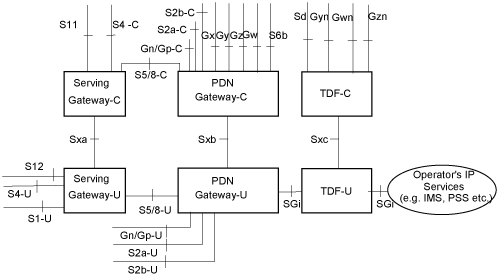As the standardisation for 5G-SA has been completed and the first roll outs are happening, I thought I’d cover the basic architecture of the 5G Core Network, for people with a background in EPC/SAE networks for 4G/LTE, covering the key differences, what’s the same and what’s new.
The AMF – Authentication & Mobility Function, serves much the same role as the MME in LTE/EPC/SAE networks.
Like the MME, the AMF only handles Control Plane traffic, and serves as the gatekeeper to the services on the network, connecting the RAN to the core, authenticating subscribers and starting data / PDN connections for the UEs.
While the MME connects to eNodeBs for RAN connectivity, the AMF connects to gNodeBs for RAN.
The Authentication Functions
In EPC the HSS had two functions; it was a database of all subscribers’ profile information and also the authentication centre for generating authentication vectors.
5GC splits this back into two network elements (Akin to the AuC and HLR in 2G/3G).
The UDM (Unified Data Management) provides the AMF with the subscriber profile information (allowed / barred services / networks, etc),
The AUSF (Authentication Server Function) provides the AMF with the authentication vectors for authenticating subscribers.
Like in UMTS/LTE USIMs are used to authenticate subscribers when connecting to the network, again using AKA (Authentication and Key Agreement) for mutual subscriber & network authentication.
Other authentication methods may be implemented, R16 defines 3 suporrted methods, 5G-AKA, EAP-AKA’, and EAP-TLS.
This opens the door for the 5GC to be used for non-mobile usage. There has been early talk of using the 5G architecture for fixed line connectivity as well as mobile, hence supporting a variety of authentication methods beyond classic AKA & USIMs. (For more info about Non-3GPP Access interworking look into the N3IWF)
The Mobility Functions
When a user connects to the network the AMF selects a SMF (Session Management Function) akin to a P-GW-C in EPC CUPS architecture and requests the SMF setup a connection for the UE.
This is similar to the S11 interface in EPC, however there is no S-GW used in 5GC, so would be more like if S11 were instead sent to the P-GW-C.
The SMF selects a UPF (Akin to the P-GW-C selecting a P-GW-U in EPC), which will handle this user’s traffic, as the UPF bridges external data networks (DNs) to the gNodeB serving the UE.
More info on how the UPF functions compared to it’s EPC counterparts can be found in this post.
Moving between cells / gNodeBs is handled in much the same way as done previously, with the path the UPF sends traffic to (N3 interface) updated to point to the IP of the new gNodeB.
Mobility between EPC & 5GC is covered in this post.
Connection Overview
When a UE attempts to connect to the network their signalling traffic (Using the N1 reference point between the UE and the AMF), is sent to the AMF.
an authentication challenge is issued as in previous generations.
Upon successful authentication the AMF signals the SMF to setup a session for the UE. The SMF selects a UPF to handle the user plane forwarding to the gNodeB serving the UE.
Key Differences
- Functions handled by the MME in EPC now handled by AMF in 5GC
- Functions of HSS now in two Network Functions – The UDM (Unified Data Management) and AUSF (Authentication Server Function)
- Setting up data connections “flatter” (more info on the User Plane differences can be found here)
- Non 3GPP access (Potentially used for fixed-line / non mobile networks)
See also: 5GC for EPC Folks – User Plane Traffic




